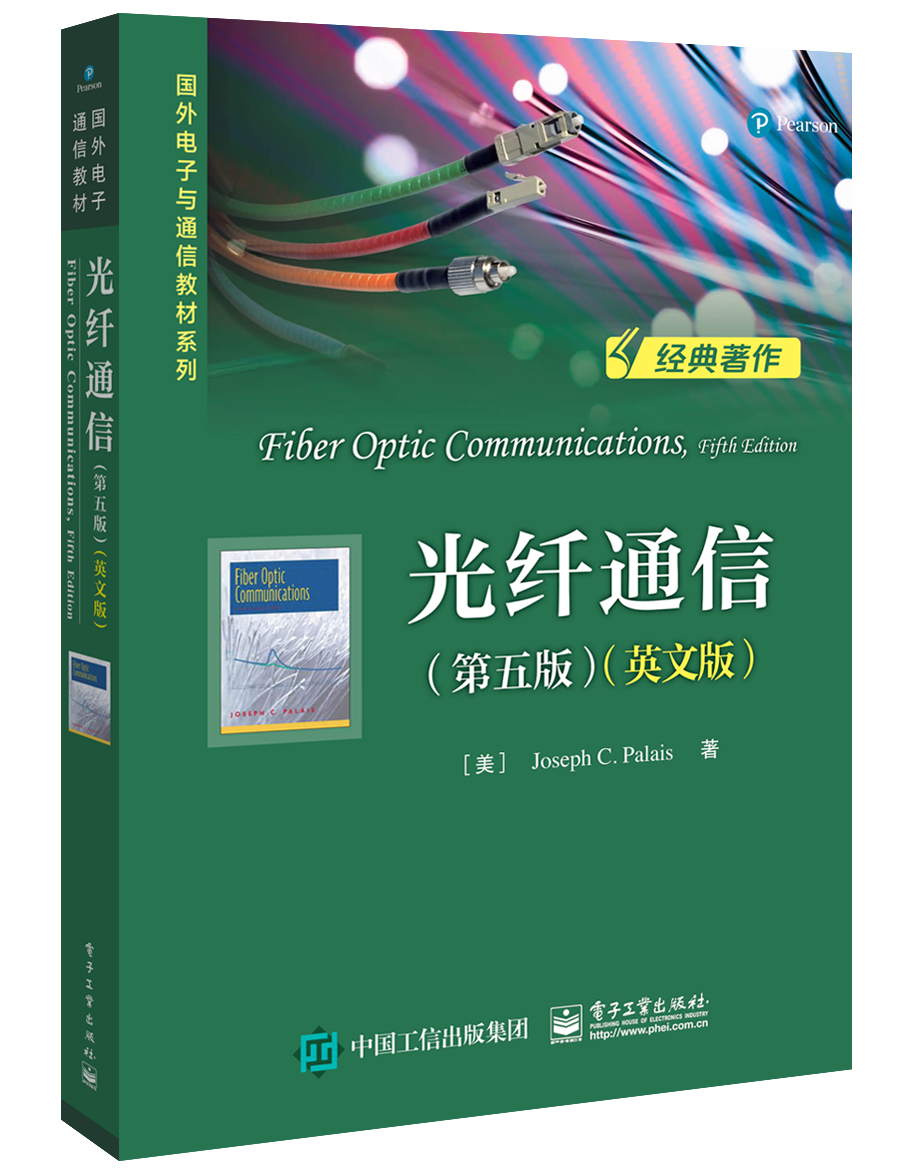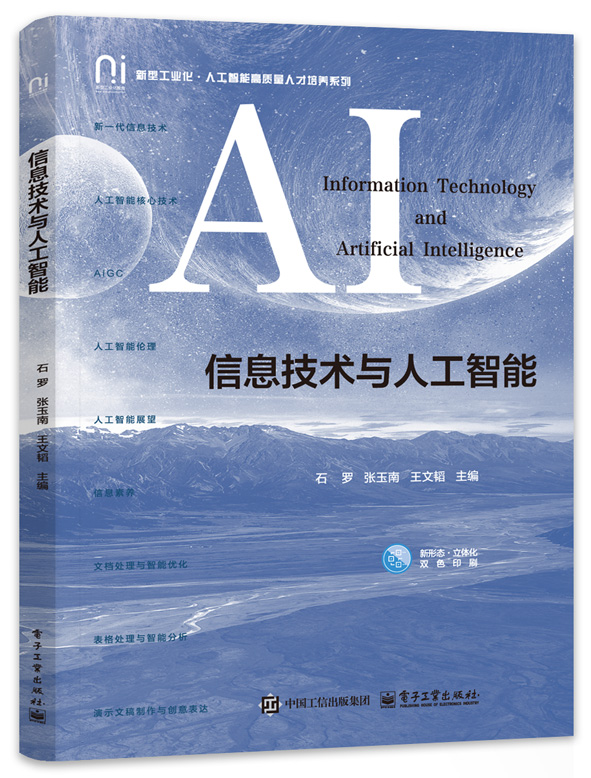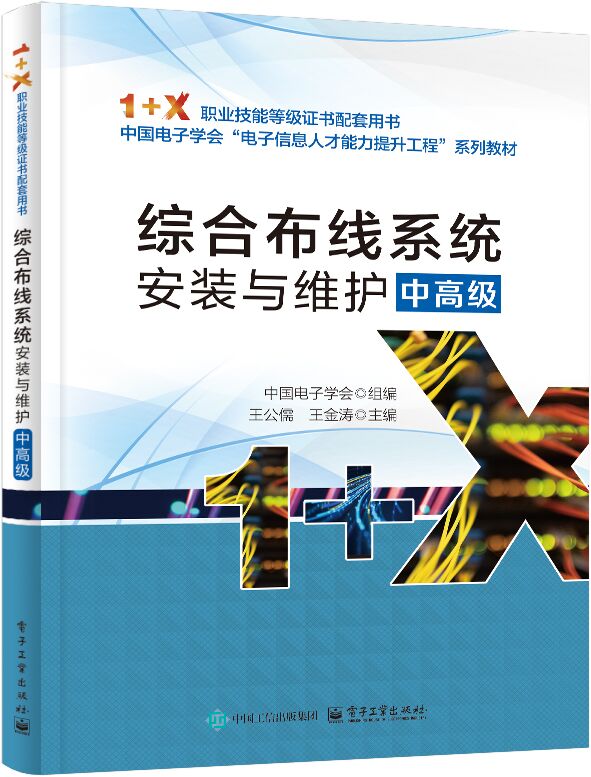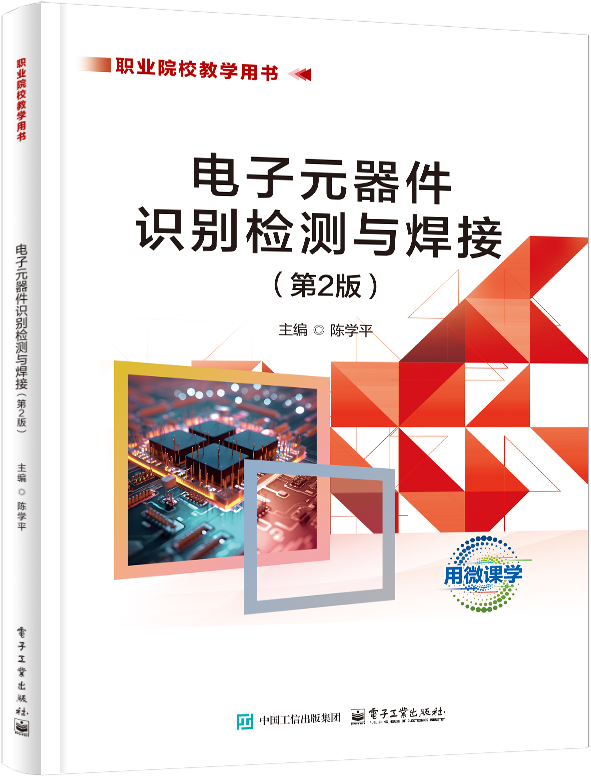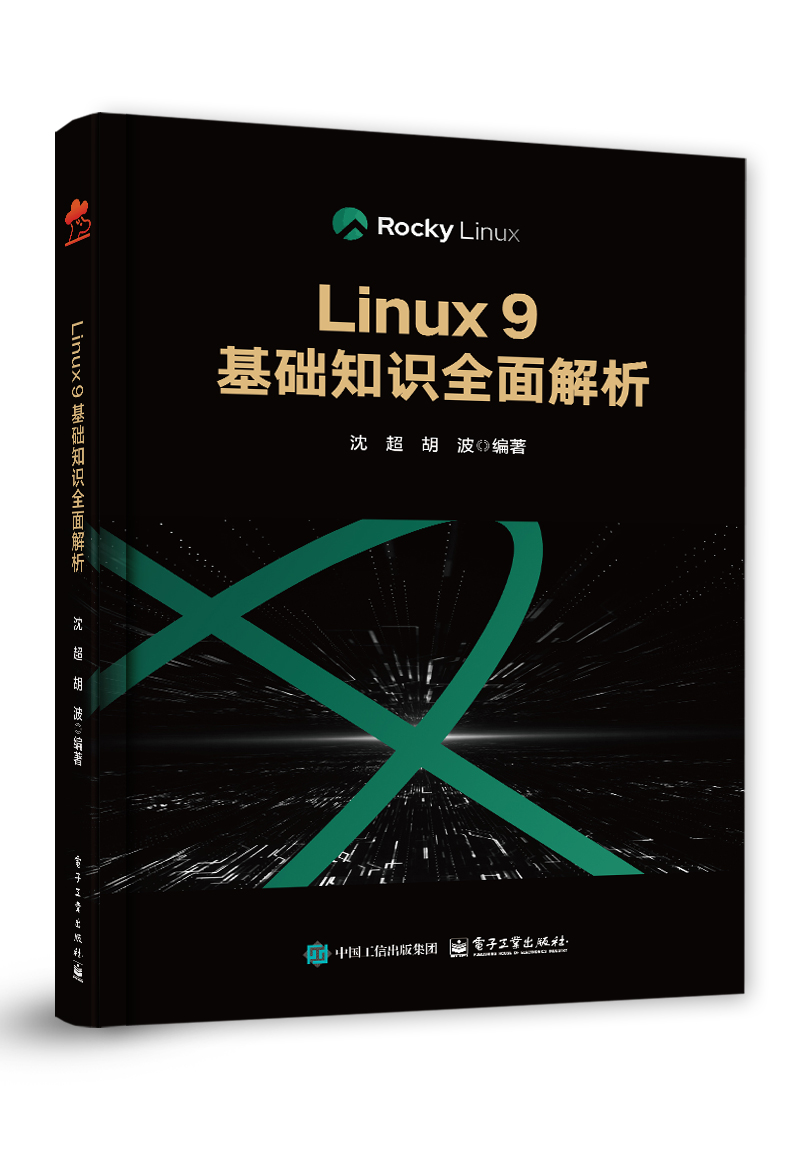光纤通信(第五版)(英文版)
丛 书 名:
国外电子与通信教材系列
作 译 者:Joseph C. Palais
出 版 日 期:2020-04-01
书 代 号:G0388130
I S B N:9787121388132
图书简介:
本书可向授课教师提供英文原版教辅(习题解答等),具体申请方式请联系Te_service@phei.com.cn。本书全面讲述光纤通信用到的主要器件、光纤传输原理、光信号的产生和接收、光纤通信系统的设计,以及光纤通信网络。内容主要涉及光纤通信系统的构成、光学和波动学的简单回顾、光学技术的基础知识、光纤和光缆、光源和光检测器、无源器件、光源的调制技术、光信号的检测和噪声对光通信的影响,以及系统设计中涉及的主要问题。本书对光纤通信基础知识的讲授全面、系统而又深入浅出,同时也非常注重近年来光纤通信领域的新技术。
-
配 套 资 源
-
图 书 内 容
内容简介
本书可向授课教师提供英文原版教辅(习题解答等),具体申请方式请联系Te_service@phei.com.cn。本书全面讲述光纤通信用到的主要器件、光纤传输原理、光信号的产生和接收、光纤通信系统的设计,以及光纤通信网络。内容主要涉及光纤通信系统的构成、光学和波动学的简单回顾、光学技术的基础知识、光纤和光缆、光源和光检测器、无源器件、光源的调制技术、光信号的检测和噪声对光通信的影响,以及系统设计中涉及的主要问题。本书对光纤通信基础知识的讲授全面、系统而又深入浅出,同时也非常注重近年来光纤通信领域的新技术。图书详情
ISBN:9787121388132开 本:16开页 数:456字 数:948.0本书目录
Chapter 1 Fiber Optic Communications Systems 光纤通信系统 1.1 Historical Perspective 历史回顾 1.2 The Basic Communications System 基本通信系统 1.3 Nature of Light 光的属性 1.4 Advantages of Fibers 光纤的优点 1.5 Applications of Fiber Optic Communications 光纤通信的应用 1.6 Summary and Discussion 总结和讨论 Problems 习题 References 参考资料 Chapter 2 Optics Review 光学概要 2.1 Ray Theory and Applications 射线理论及其应用 2.2 Lenses 透镜 2.3 Imaging 成像 2.4 Numerical Aperture 数值孔径 2.5 Diffraction 衍射 2.6 Summary and Discussion 总结和讨论 Problems 习题 References 参考资料 Chapter 3 Lightwave Fundamentals 波动学基础 3.1 Electromagnetic Waves 电磁波 3.2 Dispersion, Pulse Distortion, and Information Rate 色散、脉冲畸变和信息速率 3.3 Polarization 偏振 3.4 Resonant Cavities 谐振腔 3.5 Reflection at a Plane Boundary 平面边界上的反射 3.6 Critical-Angle Reflections 全反射临界角 3.7 Summary and Discussion 总结和讨论 Problems 习题 References 参考资料 Chapter 4 Integrated Optic Waveguides 集成光波导 4.1 Dielectric-SlabWaveguide 电介质平板波导 4.2 Modes in the Symmetric-Slab Waveguide 对称平板波导中的模式 4.3 Modes in the Asymmetric-Slab Waveguide 非对称平板波导中的模式 4.4 Coupling to the Waveguide 波导的耦合 4.5 Dispersion and Distortion in the Slab Waveguide 平板波导的色散和失真 4.6 Integrated Optic Components 集成光器件 4.7 Summary and Discussion 总结和讨论 Problems 习题 References 参考资料 Chapter 5 Optic Fiber Waveguides 光纤波导 5.1 Step-Index Fiber 阶跃折射率光纤 5.2 Graded-Index Fiber 渐变折射率光纤 5.3 Attenuation 衰耗 5.4 Modes and Fields in Step-Index Fibers 阶跃折射率光纤中的模式和场 5.5 Modes and Fields in Graded-Index Fibers 渐变折射率光纤中的模式和场 5.6 Pulse Distortion and Information Rate in Optic Fibers 光纤中的脉冲畸变和信息速率 5.7 Construction of Optic Fibers 光纤的制造 5.8 Optic-Fiber Cables 光缆 5.9 Summary and Discussion 总结和讨论 Problems 习题 References 参考资料 Chapter 6 Optical Sources and Amplifiers 光源和光放大 6.1 Light-Emitting Diodes 发光二极管 6.2 Light-Emitting-Diode Operating Characteristics 发光二极管的工作特性 6.3 Laser Principles 激光器原理 6.4 Laser Diodes 半导体激光器 6.5 Laser-Diode Operating Characteristics 半导体激光器的工作特性 6.6 Narrow-Spectral-Width and Tunable Laser Diodes 窄谱宽和可调谐半导体激光器 6.7 Optical Amplifiers 光放大器 6.8 Fiber Lasers 光纤激光器 6.9 Vertical-Cavity Surface-Emitting Laser Diodes 垂直腔面发射激光器 6.10?Summary and Discussion 总结和讨论 Problems 习题 References 参考资料 Chapter 7 Light Detectors 光检测器 7.1 Principles of Photodetection 光检测原理 7.2 Photomultiplier 光电倍增器 7.3 Semiconductor Photodiode 半导体光电二极管 7.4 PIN Photodiode PIN型光电二极管 7.5 Avalanche Photodiode 雪崩光电二极管 7.6 Summary and Discussion 总结和讨论 Problems 习题 References 参考资料 Chapter 8 Couplers and Connectors 耦合器与连接器 8.1 Connector Principles 连接器原理 8.2 Fiber-End Preparation 光纤头预处理 8.3 Splices 接头 8.4 Connectors 连接器 8.5 Source Coupling 光源耦合 8.6 Summary and Discussion 总结和讨论 Problems 习题 References 参考资料 Chapter 9 Distribution Networks and Fiber Components 分布式网络与光纤器件 9.1 Distribution Networks 分布式网络 9.2 Directional Couplers 定向耦合器 9.3 Star Couplers 星形耦合器 9.4 Switches 开关 9.5 Fiber-Optical Isolator 光纤隔离器 9.6 Wavelength-Division Multiplexing 波分复用 9.7 Fiber Bragg Gratings 光纤布拉格光栅 9.8 Arrayed-Waveguide Gratings 阵列波导光栅 9.9 MEMS Switches MEMS开关 9.10?Other Components: Attenuator, Circulator, and Polarization Controller 其他元件:衰减器、环行器和偏振控制器 9.11?Summary and Discussion 总结和讨论 Problems 习题 References 参考资料 Chapter 10 Modulation 调制 10.1?Light-Emitting-Diode Modulation and Circuits 发光二极管的调制及其电路 10.2?Laser-Diode Modulation and Circuits 半导体激光器的调制及其电路 10.3?Analog-Modulation Formats 模拟调制格式 10.4?Digital-Modulation Formats 数字调制格式 10.5?Electroabsorption Modulator 电吸收式调制器 10.6?Optic-Heterodyne Receivers 光外差接收机 10.7?Summary and Discussion 总结和讨论 Problems 习题 References 参考资料 Chapter 11 Noise and Detection 噪声与检测 11.1?Thermal and Shot Noise 热噪声与散弹噪声 11.2?Signal-to-Noise Ratio 信噪比 11.3?Error Rates 误码率 11.4?Modal Noise, Mode-Partition Noise, Amplifier Noise, Laser Noise, and Jitter 模式噪声、模分配噪声、放大器噪声、激光器噪声和抖动 11.5?Other Sources of Noise 其他噪声源 11.6?Receiver Circuit Design 接收电路设计 11.7?Summary and Discussion 总结和讨论 Problems 习题 References 参考资料 Chapter 12 System Design 系统设计 12.1?Design of Analog Systems 模拟系统的设计 12.2?Design of Digital Systems 数字系统的设计 12.3?Summary and Discussion 总结和讨论 Problems 习题 References 参考资料 Answers to Selected Problems 部分习题答案 Bibliography 参考文献 Index 中英文对照索引展开前 言
书中关于器件的新内容: .经改进后能更充分利用光带宽的新型光纤 .非零色散位移光纤 .渐变折射率聚合物光纤 .拉曼放大器 .掺铒波导放大器 .阵列波导光栅 .电吸收式调制器 .光微机电器件 .色散补偿器 .可调谐光源 .可调谐滤波器 .小形状因子连接器 .无胶连接 系统策略方面的扩展内容: .光时分复用 .密集波分复用和稀疏波分复用 .偏振模色散 .外调制 前言 自1970年世界上第一根低损耗光纤问世以来,光纤通信得到了飞速发展。正在运行的光纤通信系统比比皆是,新的设备、新的应用还在不断涌现。光纤通信所能实现的功能早已大大超过基于铜缆传输的系统。光纤通信技术使得我们身处其中的社会发展至信息社会成为可能。光纤通信与尚存的铜线应用以及正在快速增长的无线系统共同构建了信息基础架构,满足了人们日益增长的通信需求。 光纤通信技术已经非常成熟,因而以此为题材的书籍很多。在众多的著作中,有相当一部分在理论体系及数学论证方面论述得十分详细。但这对于初学者来说却相当困难。本书试图在降低难度的同时,尽可能为读者理解光纤通信系统的设计、工作原理以及系统容量等内容提供必要的信息。书中列出了重要的理论结果及数学结论,但省略了冗长的推导过程。在适当的情况下,尽可能用物理概念对这些理论结果加以解释,并用大量的图表说明这些结果的用途。为了使提供的知识更接近于实际,书中还给出了典型器件特性参数的数值范围。 本书的第一版于1984年问世时,在美国及其他一些国家已经建成了纵横交错的光纤线路,用于交换局之间的电话信息传输。到1988年本书的第二版出版时,陆地长途光纤电话网的建设已接近完成,而在世界主要的海洋中正铺设海底光缆。与此同时,光纤局域网(local area network,LAN)也正在发展之中。1992年本书第三版出版时,世界范围内已铺设超过1000万千米的光纤线路。海底光缆建设也加紧进行,光纤局域网则快速增长。到1998年本书第四版问世时,多条跨越大西洋、太平洋及其他海洋的光缆已经投入运行。同时,各种光纤入户的试验也已完成,以便为各种不同的用户提供更加广泛的业务。在本版,也就是第五版出版时,我们注意到了光纤通信的几个新的发展方向。更大的传输带宽需求(尤其是因特网和商业应用),要求设计出信息速率超过太比特每秒(Tbps)的长距离光纤通信系统。城域网(metropolitan area network,MAN)在光纤业界扮演更加重要的角色。光纤入户仍然是一个目标,但并未引起人们的特别关注,经济上的考虑使得这方面的进展步履维艰。对于无止境的更高的带宽需求,本书的基础内容不会有所变动,但第五版突出了新的技术进步来展现这一点。我试图尽可能完整地将这些新的发展纳入第五版。 本书是一本为不具备光纤光学和通信方面基础知识的读者撰写的导论性著作。书中用来解释光纤系统特性的简单概念只涉及代数和三角学。必要的时候,书中适当地引入有关光学、电子学和通信方面的基础知识。 本书的原稿是以我从事研发工作的记录及一系列有关光纤通信短期课程的讲稿为基础写成的。这些课程的听众包括攻读技术学院二年制博士学位的人员,他们担负着从设计师到部门主管的各种职责,同时还包括工业界、政府和科学界的人士。所涉及的内容包括化学、物理学和多方面的工程技术知识。同时,我还用这些短期课程的讲稿作为教材,为超过1500名电气工程专业的高年级本科生和一年级硕士研究生讲授课程。这一课程通过电视讲授了20多年,最近几年又作为网络课程在更广泛的范围内传播。 可以从本书获益的专业人士包括从事实际工程设计的工程师,他们往往关注元器件、设备的选择和应用以及系统的设计计算。关于整个系统方面的知识对于器件设计师也很有用。其他从事与光纤通信事业有关工作的读者,例如高级工程决策人员、项目经理、技术人员、市场和销售人员以及教师,都可以从本书中获得很有价值的信息。 本书是按以下结构来组织的。本书开篇给出了整个光纤通信系统的结构框图,指出了构成光纤通信系统的主要单元。这可以激发读者学习后续各章的动力。第2章和第3章回顾了有关光学和波动学领域的一些重要成果,这些基础知识对于理解光纤器件及光纤系统是十分必要的。第4章讲述集成光学,介绍将光器件集成在同一基片上的技术。集成光波导技术为在光纤中光波的传播提供了优异而简单的模型。第5章至第9章讲授用于构建光纤通信系统的主要器件,包括光纤、光源、光检测器、耦合器以及分布式光网络。有关系统方面的考虑在第10章至第12章中讲授,包括调制方式、噪声对信息传输质量的影响以及系统设计等重要内容。 我希望读者在掌握本书的这些知识以后,能够设计和规划光纤系统,以及选择和评估构成该系统的诸如光纤、光源、光检测器和耦合器等元器件。掌握本书中的知识以后,读者也可以胜任对一些商用子系统,例如光发射机和光接收机的评估工作。 本书包含了自本书第四版出版以来光纤业界已有的重要进展。新的或扩展的论题包括拉曼(Raman)放大器、掺铒波导(erbium-doped waveguide)放大器、阵列波导光栅、电吸收式调制器、光微机电(micro-electro-mechanical,MEM)元件、色散补偿、可调谐光源、可调谐滤波器、光时分复用、密集波分复用及稀疏波分复用等,以提升光谱利用率,更为注重外调制技术。在书中加进了一个新流行的光谱带分割表,对小形状因子连接器和无胶连接进行了描述。另外,还有很多细微之处的论述也有所改进,以便使概念更加清晰。 由于很多院校选用本书作为研究生的光纤光学课程教材,所以从第二版起本书添加了一系列习题。此次又新增了一些习题,同时对部分旧习题进行了修改,使新版本更适合课堂教学的需要。有一些习题相对简单,主要是使学生对书中的知识掌握得更加熟练,从而更有把握。另一些习题则涉及更深入的考虑,同时还需要回顾其他相关课程的内容。大多数习题的答案附在本书末尾,采用本书作为教材的授课教师可获得本书的习题解答(申请Email:te_service@phei.com.cn)。 本书的前七章可以作为一个学期的课程。作为入门课,首先引进光纤通信系统中的主要元器件。学完这门课的学生可掌握进入光纤业界的必要知识。本书的后五章讲述一些更为高深的课题,可以作为第二学期的课程。为了进行数学方面的简化以及扩大本书的读者群,书中列出的许多结论没有加以详细推导。如果授课对象训练有素,例如是电气工程专业的高年级学生,则授课教师可以补充讲解一些详细的推导过程,以使学生加深理解。 Joseph C. Palais 亚利桑那州立大学 http://faculty.engineering.asu.edu/palais/ Preface Fiber optic communications developed very quickly after the first low-loss fibers were produced in 1970. Operational fiber systems are now common, and new installations and applications appear continually. Communication by fibers has taken over many of the functions previously performed by copper-based systems and extended them significantly. Fibers have become an enabling technology in the information society in which we live. They work together with the remaining copper applications and the growing wireless infrastructure to meet our expanding communications needs. Fiber technology has matured sufficiently so that many books have been written on the subject. Some of these books are quite detailed in terms of theoretical and mathematical content, and the beginner could find the level difficult. This text is intended to be less difficult, while still bringing to the reader the information necessary to understand the design, operation, and capabilities of fiber systems. Important theoretical and mathematical results are given without accompanying lengthy proofs. However, results are explained in physical terms when possible and appropriate, and extensive tables and figures are used to make those results readily usable. To provide a realistic view, numerical values are given for the ranges of typical device parameters. When the first edition of this book appeared in 1984, fibers had already crisscrossed much of the United States and many other countries to deliver telephone messages between the major exchanges. By 1988, when the second edition was published, the land-based long-distance fiber telephone network was nearly complete, and submarine fiber telephone cables were being installed beneath the major oceans. In addition, fiber optic local-area networks (LANs) were in development. When the third edition went to press in 1992, over 10 million kilometers of fiber had been installed worldwide, undersea cables were being constructed, and installation of fiber LANs was increasing. By 1998, when the fourth edition was published, numerous submarine fiber cables covering the Atlantic and Pacific oceans and many smaller seas were operational. In addition, numerous tests had been completed for bringing fiber to all homes, holding out the promise for expanded services to the individual subscriber. With this fifth edition, we note several new developments. The demand for more transmission bandwidth (particularly for Internet and business applications) has required design of fiber systems carrying information at terabit-per-second rates over great distances. Metropolitan area networks (MANs) have become significant parts of the fiber industry. Bringing fiber connections to the home is still a goal, but an elusive one. Economic considerations have slowed progress in this direction. It is the insatiable demand for greater bandwidth that makes this fifth edition necessary The fundamentals have not changed, but new technological advances and improvements have emerged to satisfy this demand. I have attempted to work these new ideas into the previous edition with as little disruption as possible. This is an introductory book. No background in fiber optics or in optic communications is assumed. Only the simplest concepts from algebra and trigonometry are invoked in explaining the characteristics of fiber systems. Appropriate background material on optics, electronics, and communications is introduced in the text as needed. This book was originally based on a set of notes I developed and used for numerous short courses on fiber optic communications. Participants in these courses had training ranging from two years of technical school through the Ph.D. level. Jobs varied from designer to board chairman. Attendees included personnel from industry, government, and academia. Individual backgrounds were in chemistry, physics, and many areas of engineering. In addition to the short course presentations, I have taught this material to over 1,500 electrical engineering students at the senior and first-year-graduate level. The course has been taught over television for more than 20 years. In the last few years it has also been available as an Internet-delivered class. The professionals benefiting from this book include practicing design engineers concerned with the selection and application of components and with the design and evaluation of systems. Knowledge of the entire system is useful for the device designer as well. Others involved in fiber optics, such as high-level engineering-decision makers, project managers, technicians, marketing and sales personnel, and teachers, can also obtain valuable information from the material presented. The organization of the book is as follows. Block diagrams of entire fiber optic systems are presented at the outset. This identifies the components of fiber systems, providing motivation for their individual study in succeeding chapters. Chapters 2 and 3 contain a review of important results from the fields of optics and wave travel. This basic information is needed for an understanding of fiber optic devices and systems. Chapter 4, on integrated optics, introduces the technology of combining optic components onto a single substrate. The integrated optic waveguide provides an excellent, simplified model for propagation of light in a fiber. Chapters 5-9 present the main devices encountered in a fiber optic system. These are the fiber, the light source, the light detector, the couplers, and the distribution networks. System considerations appear in Chapters 10-12, where modulation formats, the effects of noise on message quality, and system design are covered. The last chapter includes examples of operational systems. In that chapter, the design information developed throughout the book is applied to realistic problems. I expect the reader who has mastered this material to be able to design and specify systems and to choose and evaluate such system components as fibers, light sources, detectors, and couplers. Commercially available subsystems, such as complete transmitters and receivers, will also be amenable to evaluation by the techniques presented in this book. This new and fully revised edition of Fiber Optic Communications incorporates significant advances made in the fiber industry since publication of the fourth edition. Because the fundamentals of the technology have remained the same, the number of changes is moderate. Nonetheless, the changes and additions are significant. Added or expanded topics include the following: Raman amplifiers, erbium-doped waveguide amplifiers, arrayed waveguide gratings, electroabsorption modulators, optical micro-electro-mechanical (MEMs) components, dispersion compensation, tunable light sources, tunable filters, optical time-division multiplexing, dense and coarse wave-length-division multiplexing, increased utilization of the optical spectrum, and emphasis on external modulation. A new table showing the current spectral band classification scheme has been added. Small-form-factor connectors and nonadhesive splices are described. In addition, the discussions in a number of sections were modified to improve the clarity of the presentation. Because numerous colleges adopted the initial text for an undergraduate course in fiber optics, a homework problem set was inserted in the second edition. New problems have been added, and several of the old ones have been updated for this new edition, making this text’s use in the classroom even more desirable. Some problems are merely “plug-in”-type questions, intended to give the student practice and confidence in understanding of the material presented. Other problems take more thought and might even require finding and reviewing material from other sources. Answers to most problems appear at the end of the book, and a new solutions manual is available for instructors. Many new references have been added. The bibliography and periodicals listing at the end of the text provides a resource for further study. The bibliography includes both older “classic” fiber optics presentations and several newer ones that have appeared since the last edition of this textbook. I find that the first seven chapters can be covered in a one-semester course. This introduces all the major system components to the students, allowing those who have mastered the material to enter productively into the fiber industry. The last five chapters, on more advanced topics, can be covered in a second term. To simplify the mathematics and reach a wider audience, many of the results presented in the text are not fully derived. Instructors of well-prepared students, such as seniors in electrical engineering programs, may wish to fill in the derivations to deepen student understanding. Joseph C. Palais Arizona State University http://faculty.engineering.asu.edu/palais/展开作者简介
本书暂无作者简介 -
样 章 试 读
-
图 书 评 价 我要评论
